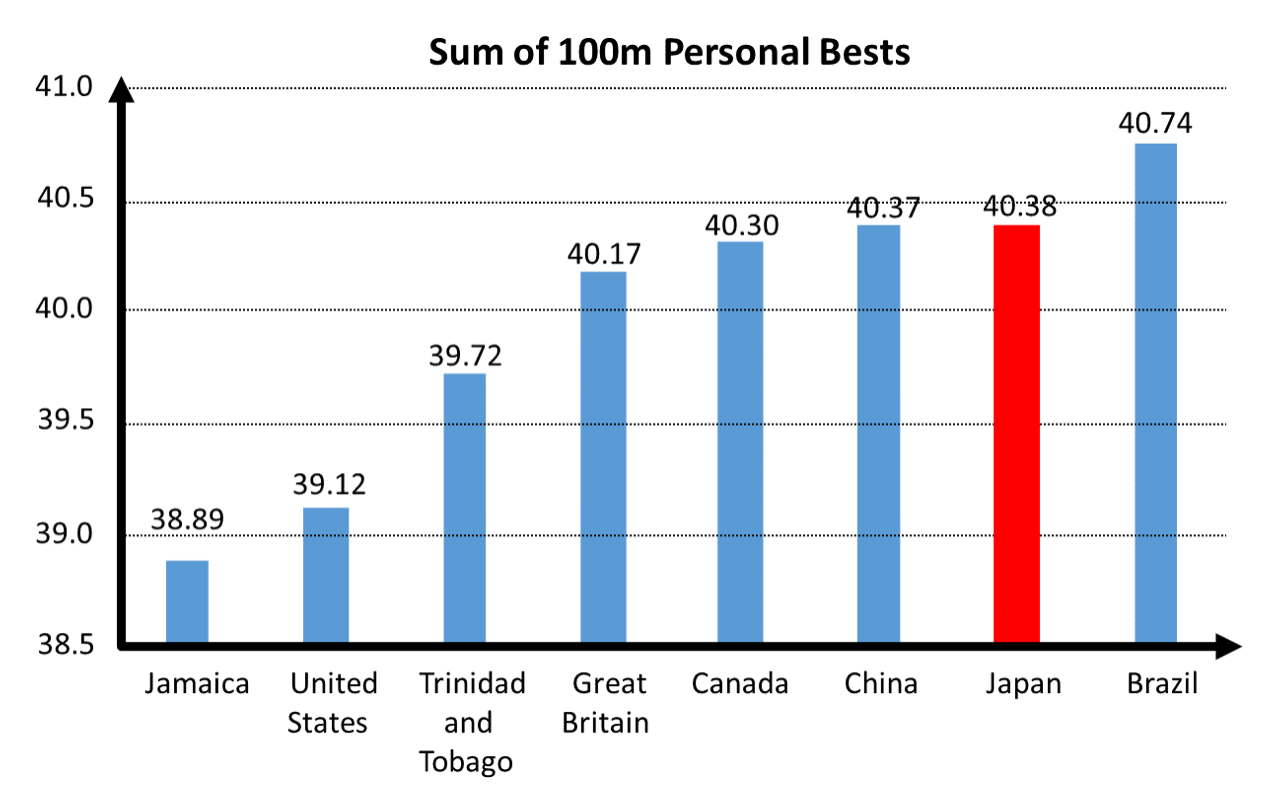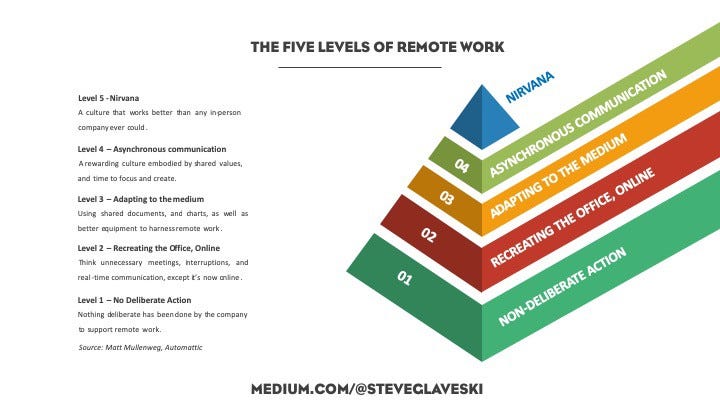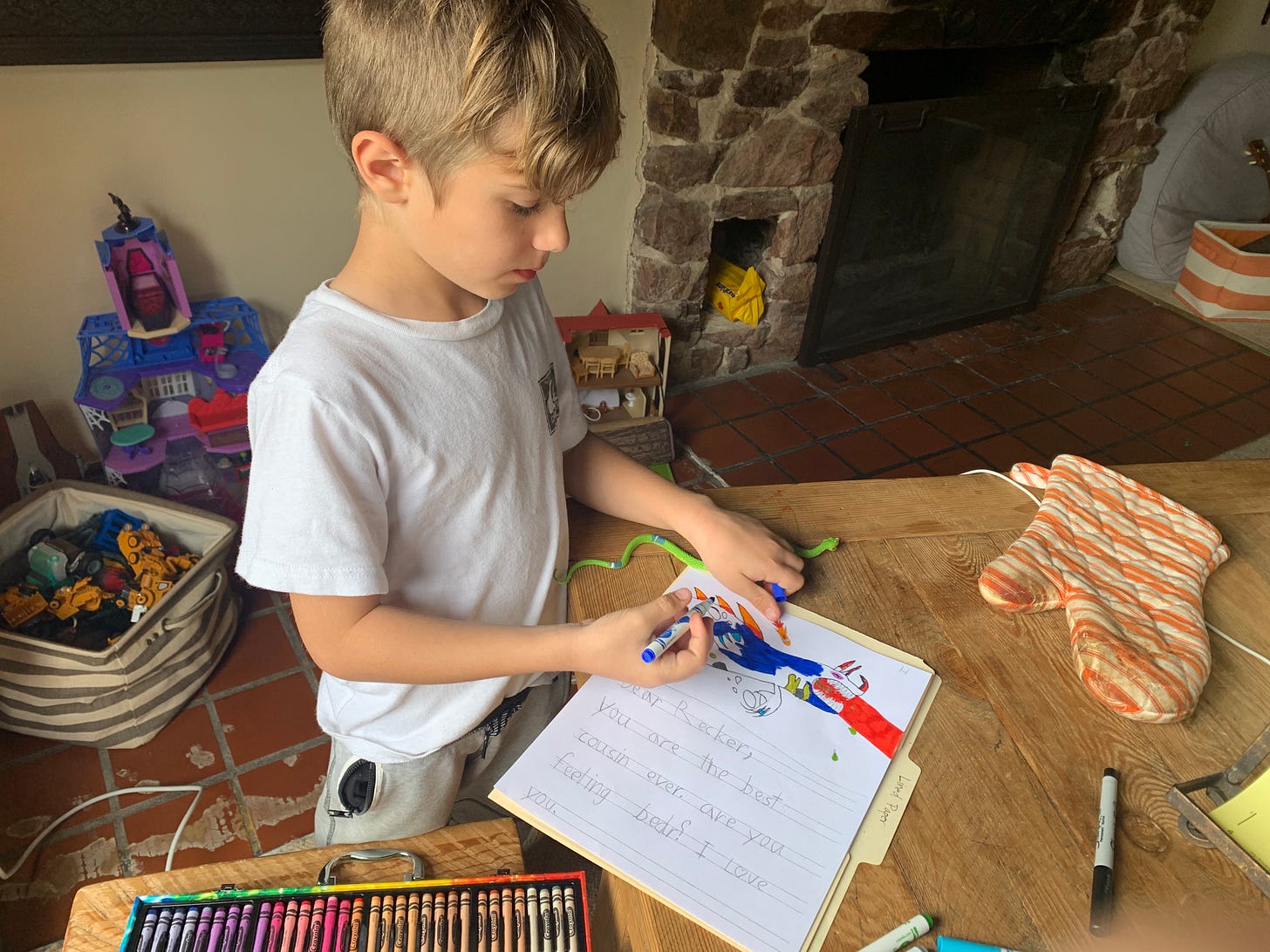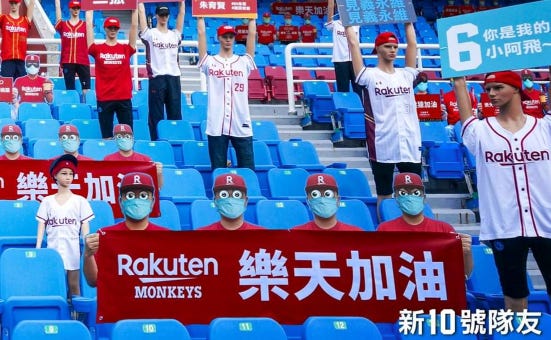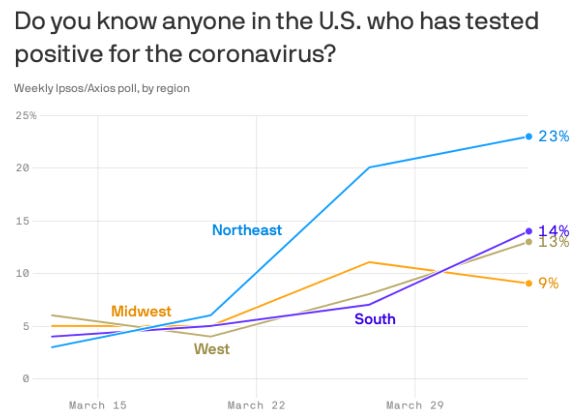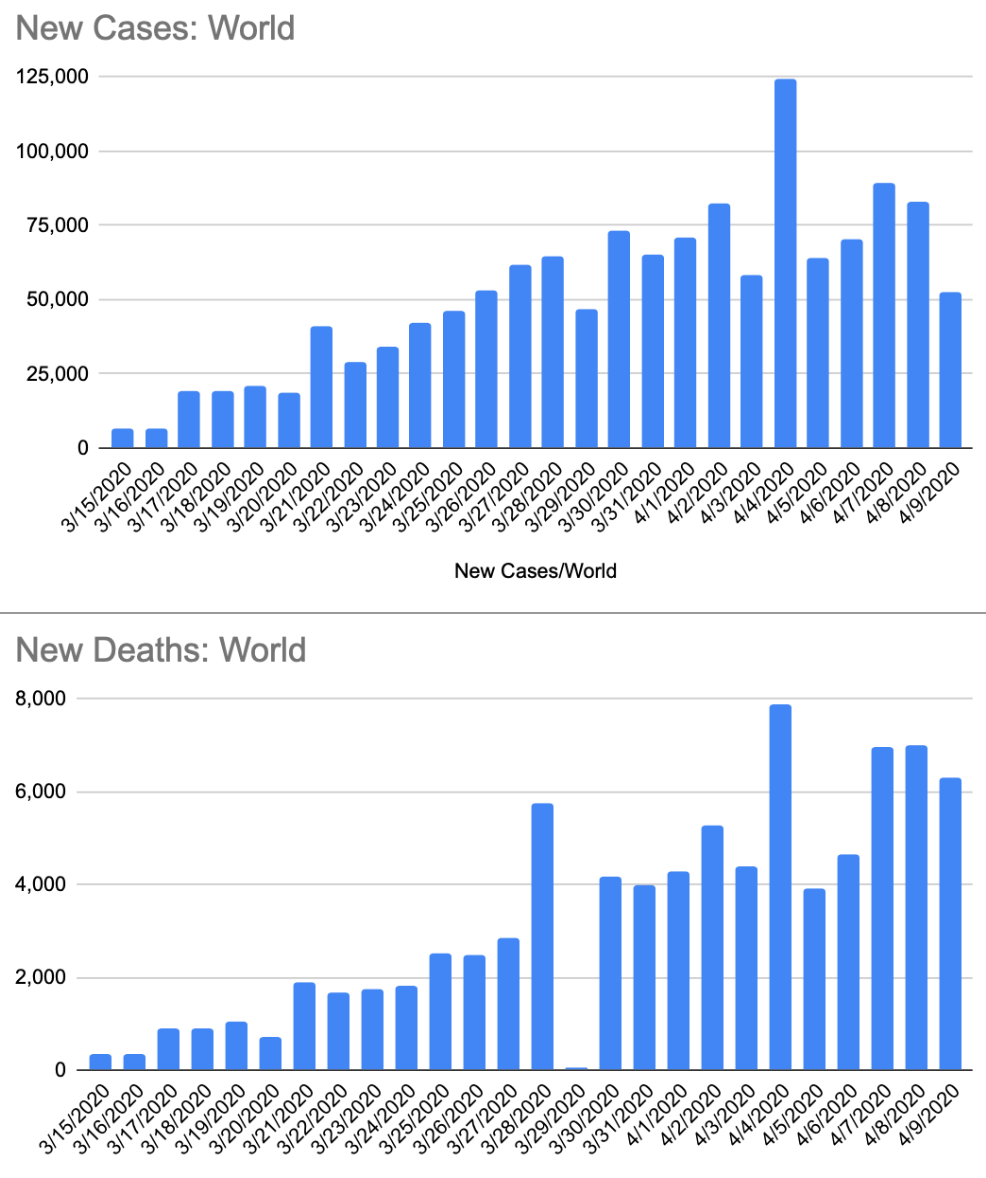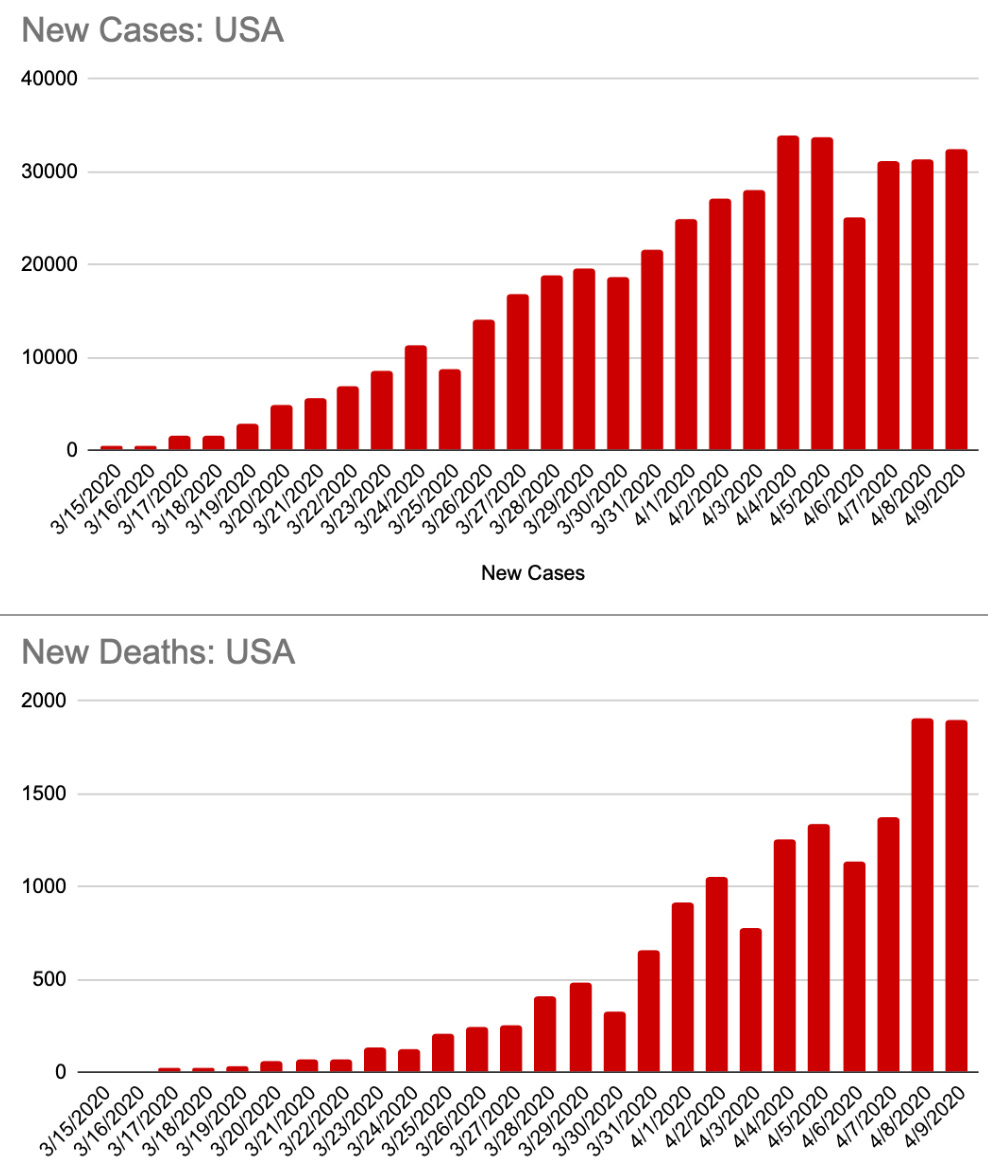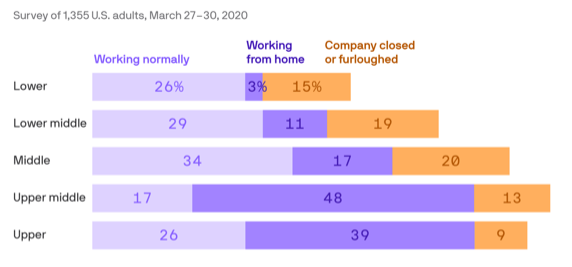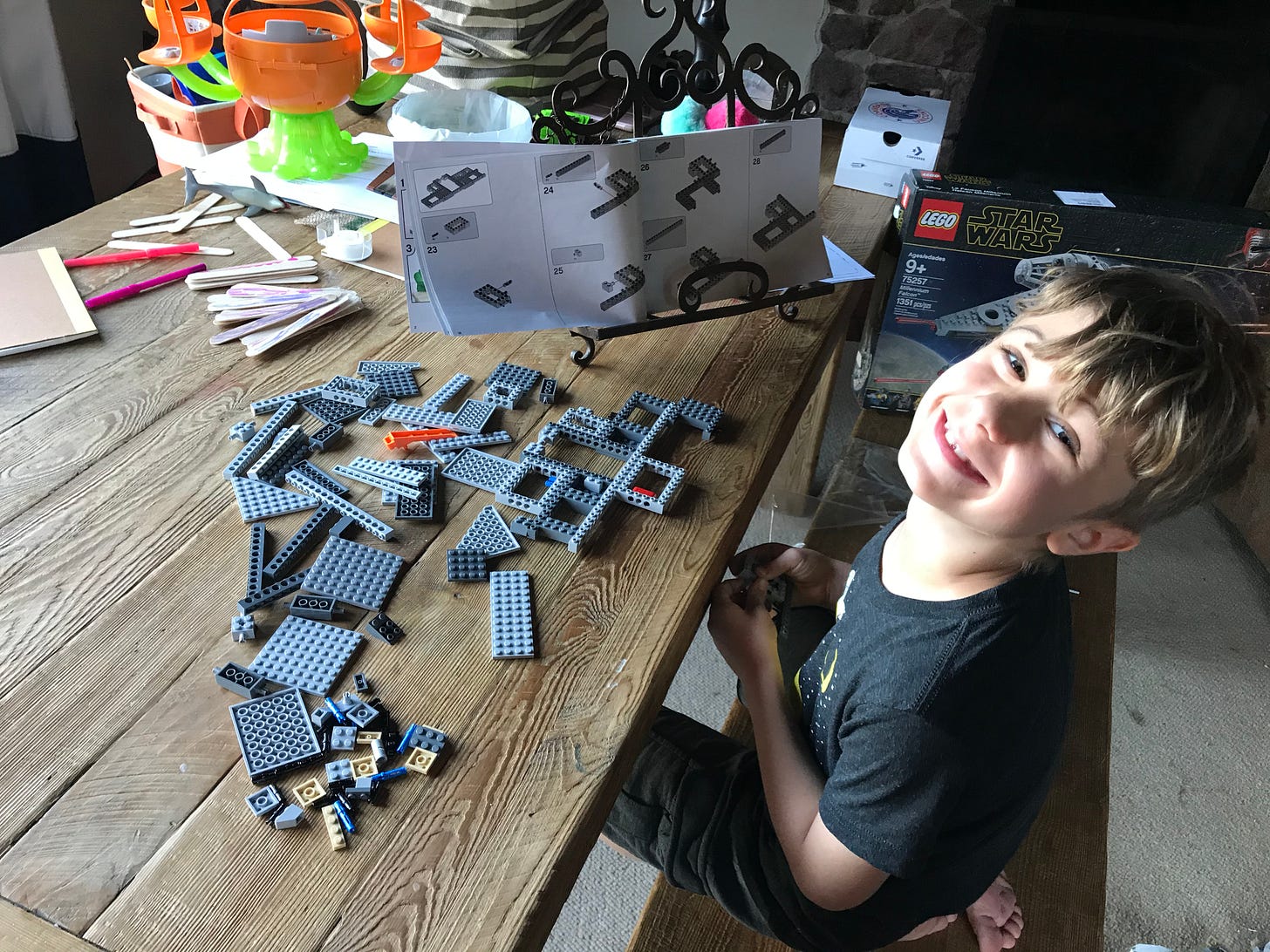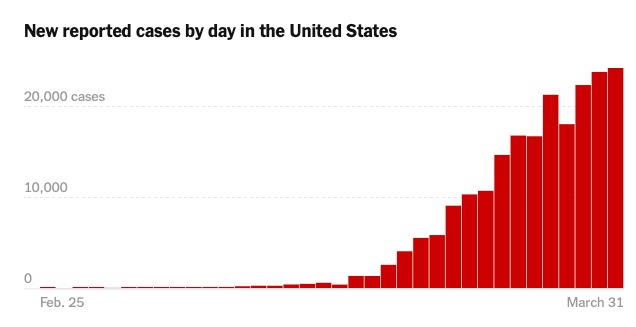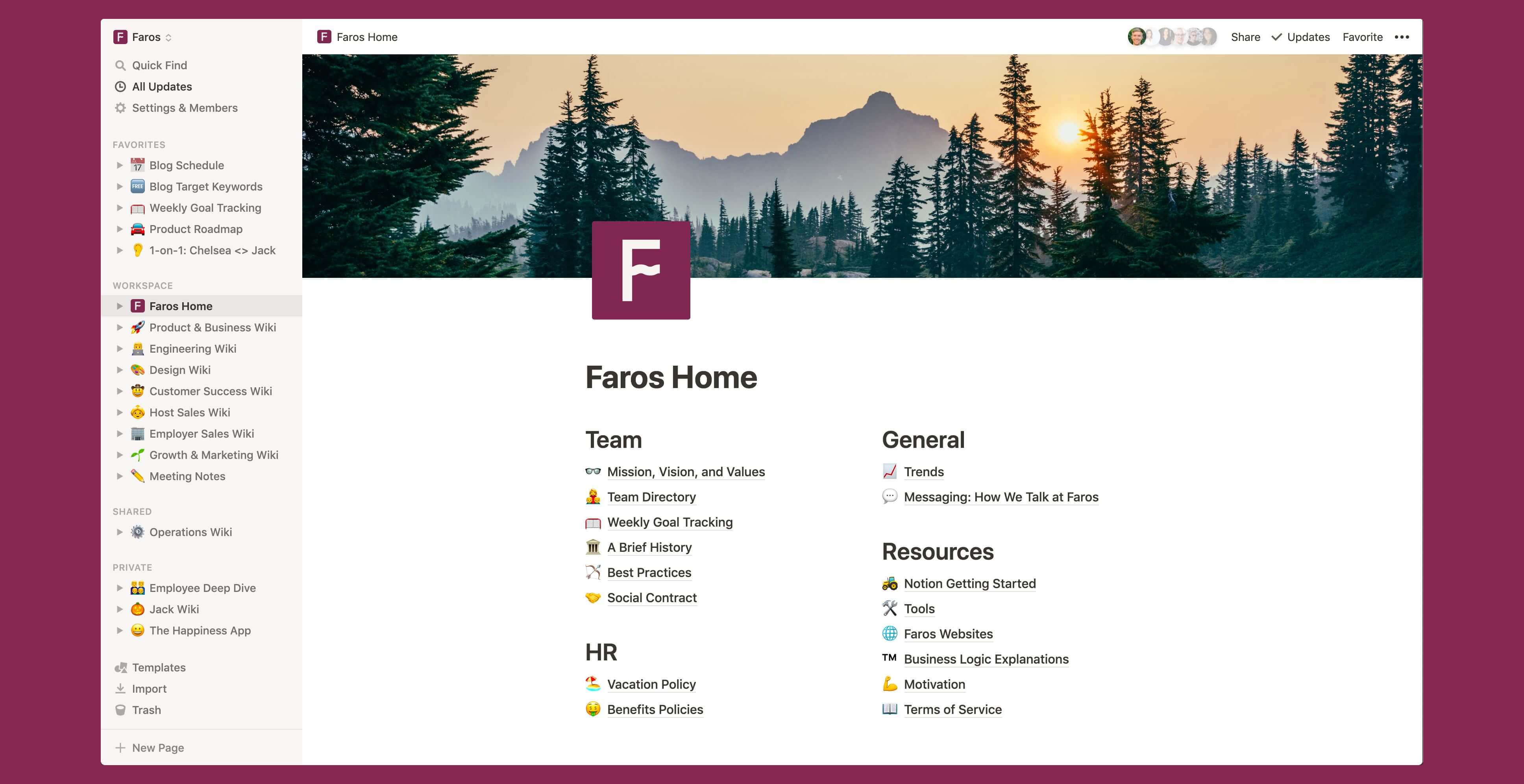This cover is from the new NY Times Magazine cover article “What is life like right now on the life-and-death shift?” showing photographed workers on the front lines of Covid-19 in northern Italy.
What I’m thinking about: Working from Home
I’ve been working from home for the past year. One thing I noticed recently is that lots of other companies aren’t doing it very well. Over the past years, I’ve learned some modern work-from-home concepts. Specifically, there are 5 levels of remote work. The levels are:
- Thinking this is temporary, and waiting to get back to the office to do your work.
- Trying to recreate the office environment. This means trying to do things in-person, keeping all the interactions real-time, and making sure people are present and available during work hours. I saw a lot of companies here when coronavirus started. People were still expected to be online from 9 to 5, and in some cases employers installing screen-logging software on their employee machines so that they can play the role of Big Brother.
- Acceptance and adaptation. Here, companies and employees invest in their home office with better videos and possibly noise cancellation machines. Meetings move to shared docs and people start working asynchronously.
- Fully asynchronous. Getting to a place where you can actually get more done because you’re at home. This is where you want to be.
Companies that truly practice asynchronous communication have stepped out of the industrial revolution, and no longer conflate presence with productivity, or hours with output, as one might on the factory floor.
- Nirvana. This is where your distributed team works better than any in-person team ever could.
The analogy I loved is that the Japanese 4×100 track team in the 2016 Olympics. They were massive underdogs. In fact, nobody bet on them to medal. Not one runner could run under 10 seconds:
But because they mastered the baton handoff, they shaved seconds off their race and came in 2nd. That’s right, the Japanese got the silver medal because they were better and the handoff.
The idea here is that, as a company, you can master how work and ideas are handed off between employees your company can be much faster, more efficient, and a better place to work than others.
True asynchronous working is the place you need to get to. We’re working on it at Onward and so far it’s been great. Using the tool Notion is a big piece of it. I love Notion and the fact that it’s worth $2 Billion with only 40 employees should indicate this is a popular trend. I could talk about this for hours, but here’s a good place to start: a good post that goes into this.
Other Items
At my house it’s Spring Break which means there are no lesson plans coming from school. Instead, our current project is for Hunter and Sasha to make 7 really nice cards to send to their grandparents and cousins.
Speaking of Sports (from yesterday’s email), the Rakuten Monkeys of the Chinese Professional Baseball League (which is Taiwan) will play games in front of 500 robot mannequins dressed up as fans.
Also, the second episode of Some Good News by John Krasinski landed yesterday. Pretty funny and good:
Stats
The virus is starting to get out more and more in the US. I thought it was interesting to see that only 1 or 2 out of 10 know someone who has it. I know a few people.
New daily cases are shown below.

